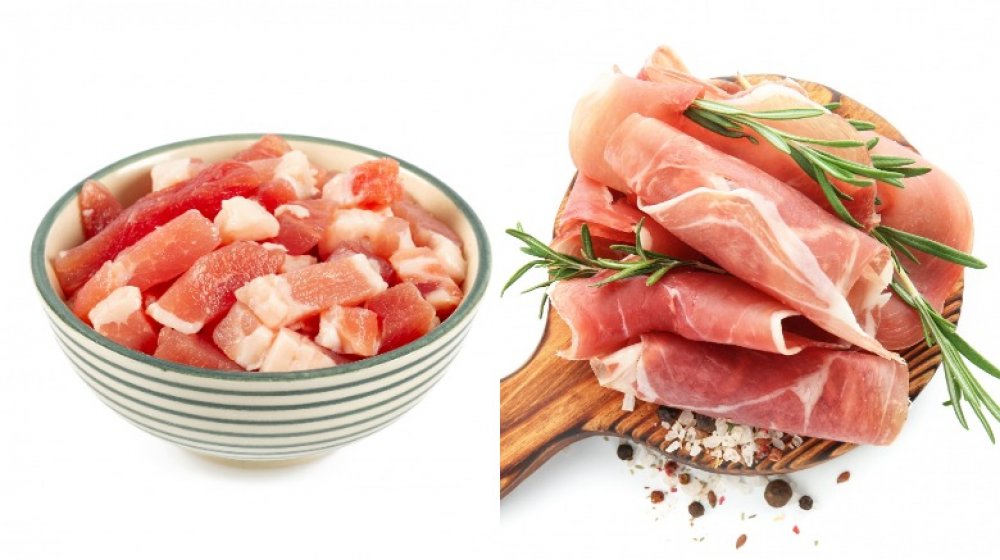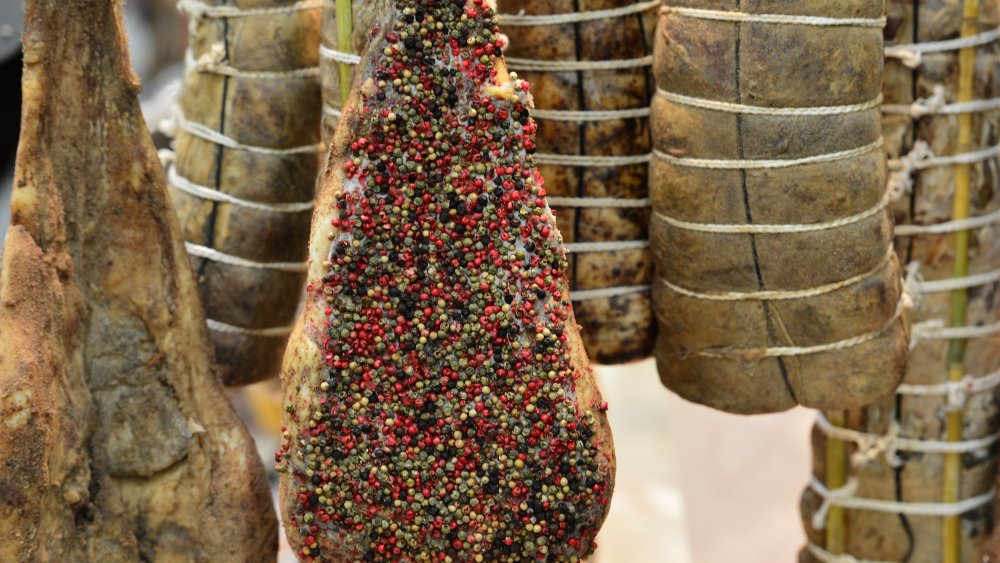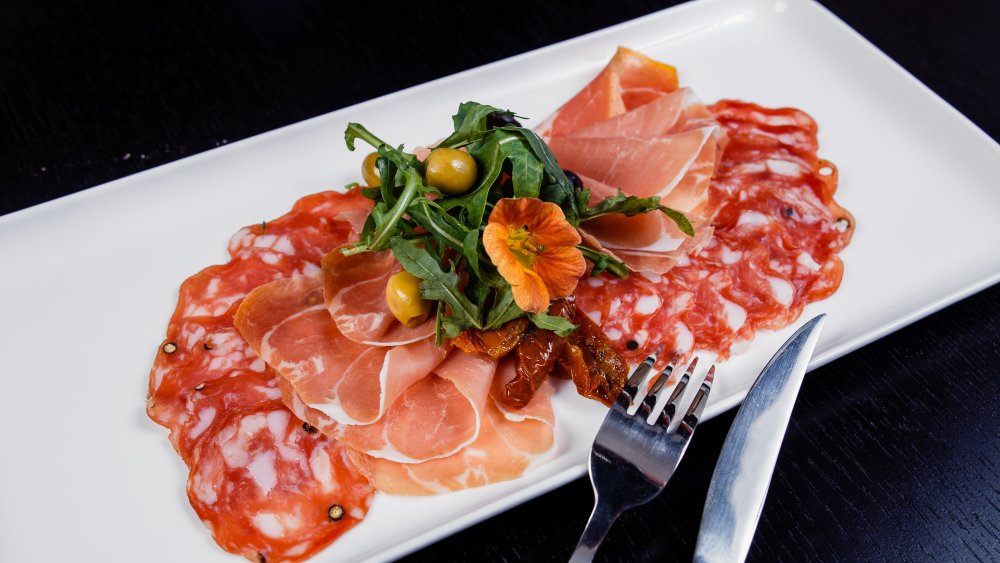What's The Real Difference Between Pancetta And Prosciutto?
Pancetta and prosciutto are both cured meats, both pork products, both Italian, and both even start with the letter "p." Confusing! No wonder they're frequently mistaken for one another. Are they, in fact, the same thing, or at least similar enough so as to make them interchangeable?
No, not really. Spoon University instructs that pancetta, like bacon, comes from the belly of the pig, and, like bacon, must be cooked before it is eaten. Prosciutto, on the other hand, comes from the pig's hind leg, like ham — in fact, it is actually a type of ham. Perhaps most important to know, however, is that prosciutto, unlike pancetta, is safe for consumption right out of the package.
How are pancetta and prosciutto made?
According to The Kitchn, pancetta is cured with salt, although spices and other aromatics may also be added in order to provide additional flavoring. Pancetta may be sold in thin slices or diced into little cubes.
The pig leg, or ham, that goes into making prosciutto is rubbed with a salt cure which may or may not contain extra spices. It is then hung to air dry for months or even years, during which time the salt will slowly draw out the moisture and concentrate the flavor. Once the prosciutto is deemed ready, it is shaved into paper-thin slices before being sold.
How are pancetta and prosciutto used?
Pancetta is used to make spaghetti carbonara, lending the classic egg, cheese, and pasta dish its characteristic flavor. Pancetta cubes may also be sautéed, perhaps with onions or garlic, and used to add what Cook's Illustrated calls "savory depth as well as intensely flavorful, meaty bites" to soups, stews and other pasta dishes. Spoon University also mentions pancetta playing a starring role in side dishes such as roasted Brussels sprouts and goat cheese-stuffed figs.
Prosciutto frequently features on charcuterie boards and antipasto platters. Its delicate saltiness contrasts nicely with fruit, as when it is wrapped around melon or figs to make easy two-ingredient appetizers, and it also plays nicely with vegetables like asparagus. Prosciutto also stands out in salads and sandwiches, and it even makes a fabulous pizza topping without any of the grease that less-refined pork products like pepperoni and sausage can add.


